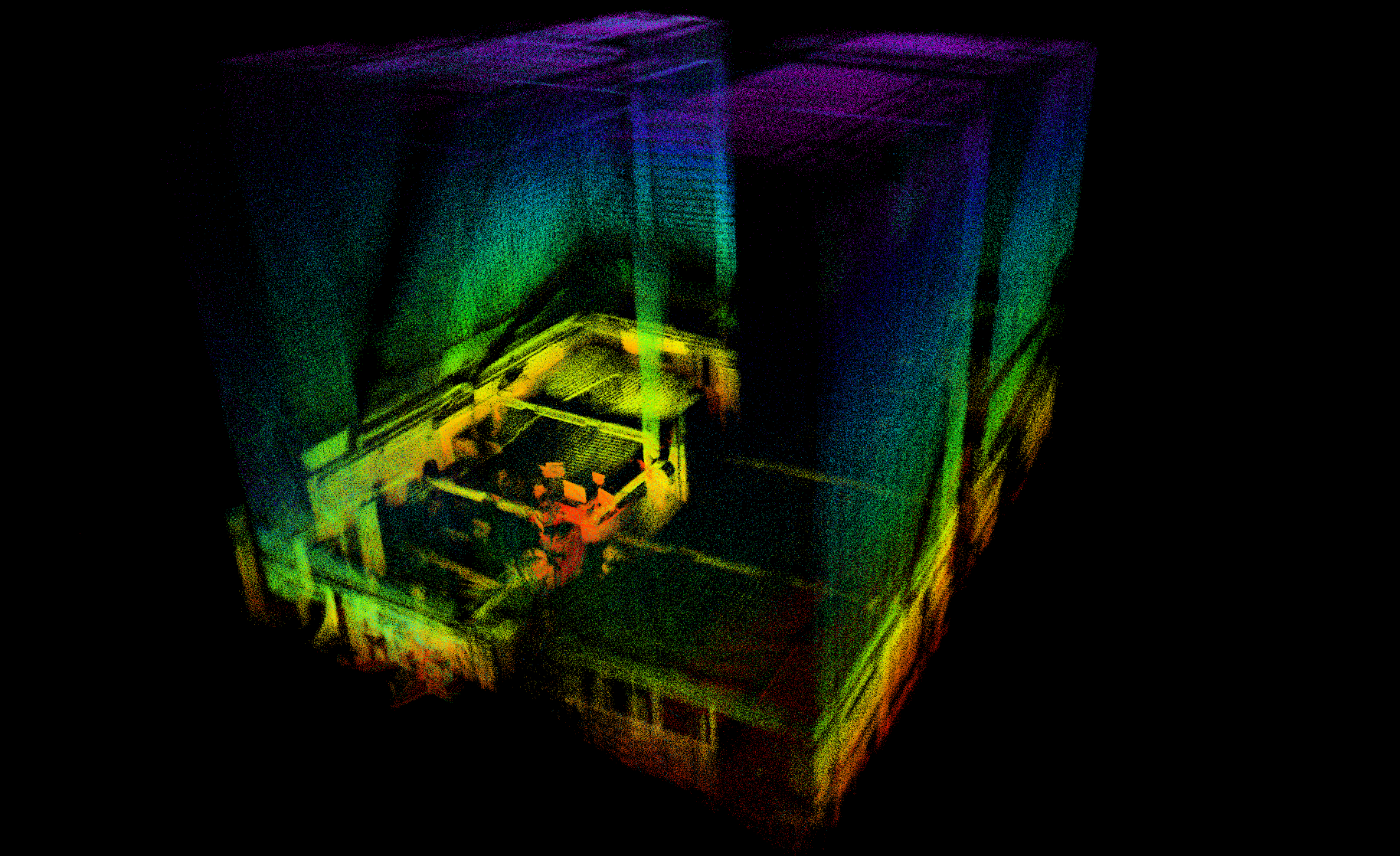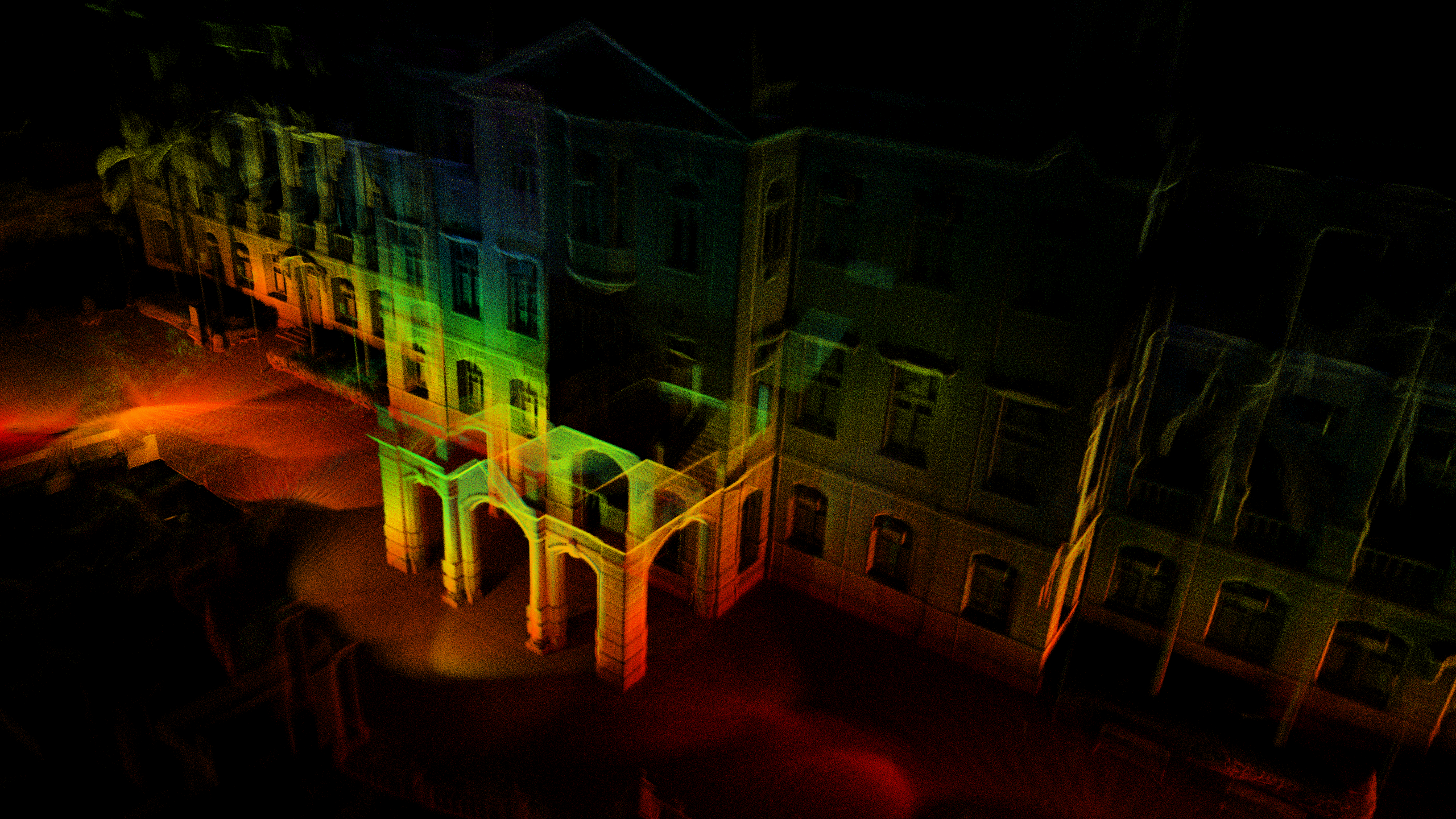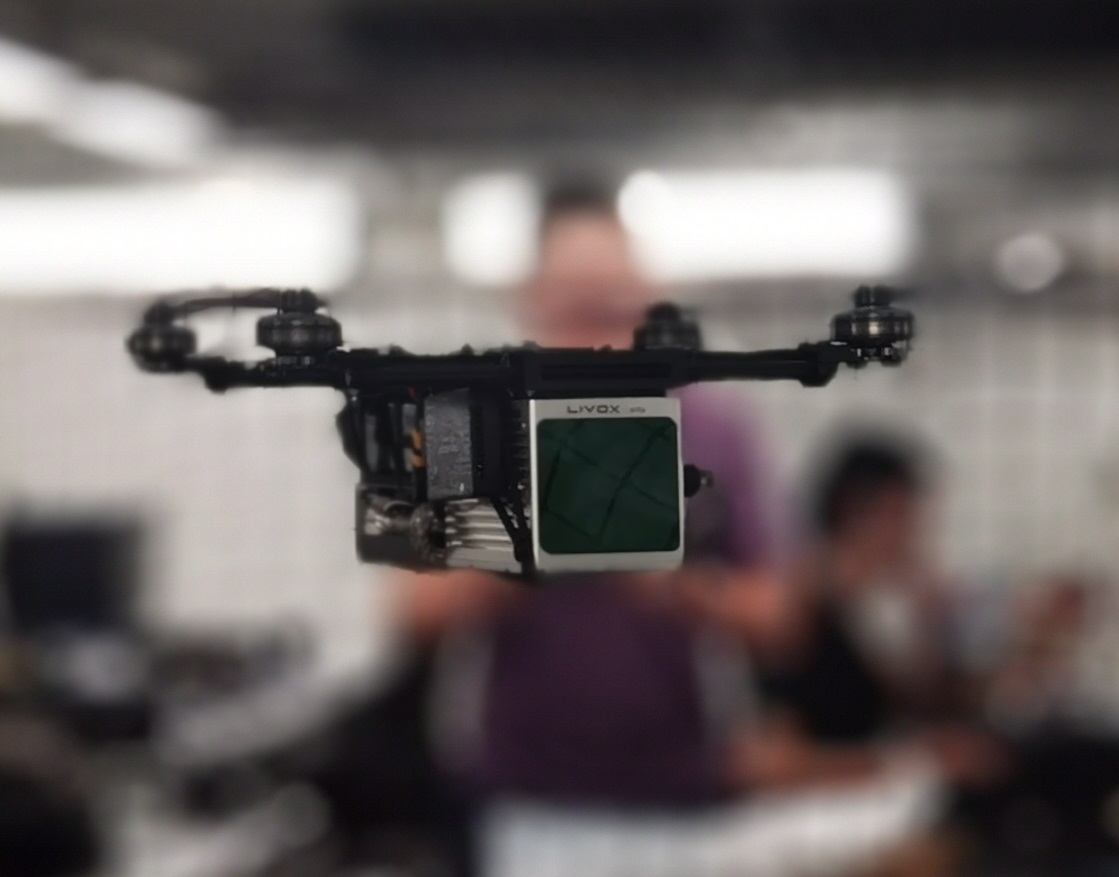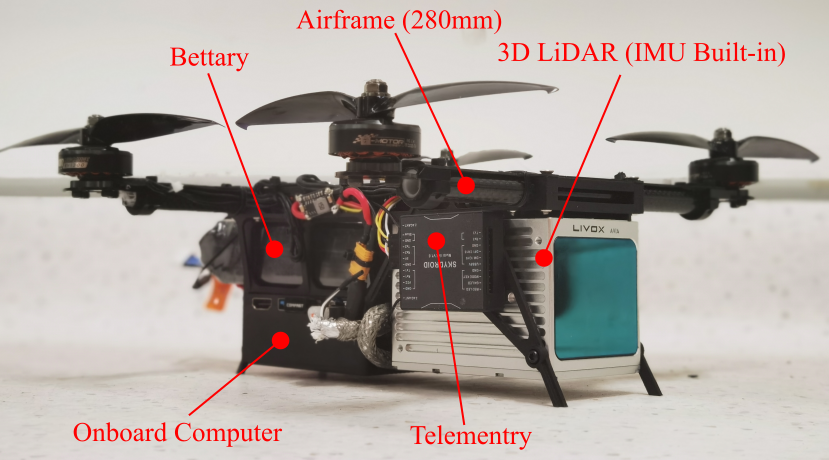## Related Works
1. [ikd-Tree](https://github.com/hku-mars/ikd-Tree): A state-of-art dynamic KD-Tree for 3D kNN search.
2. [IKFOM](https://github.com/hku-mars/IKFoM): A Toolbox for fast and high-precision on-manifold Kalman filter.
3. [UAV Avoiding Dynamic Obstacles](https://github.com/hku-mars/dyn_small_obs_avoidance): One of the implementation of FAST-LIO in robot's planning.
4. [R2LIVE](https://github.com/hku-mars/r2live): A high-precision LiDAR-inertial-Vision fusion work using FAST-LIO as LiDAR-inertial front-end.
5. [UGV Demo](https://www.youtube.com/watch?v=wikgrQbE6Cs): Model Predictive Control for Trajectory Tracking on Differentiable Manifolds.
## FAST-LIO
**FAST-LIO** (Fast LiDAR-Inertial Odometry) is a computationally efficient and robust LiDAR-inertial odometry package. It fuses LiDAR feature points with IMU data using a tightly-coupled iterated extended Kalman filter to allow robust navigation in fast-motion, noisy or cluttered environments where degeneration occurs. Our package address many key issues:
1. Fast iterated Kalman filter for odometry optimization;
2. Automaticaly initialized at most steady environments;
3. Parallel KD-Tree Search to decrease the computation;
## FAST-LIO 2.0 (2021-07-05 Update)
**Related video:**
[FAST-LIO2](https://youtu.be/2OvjGnxszf8)
[FAST-LIO1](https://youtu.be/iYCY6T79oNU)
**New features:**
1. Incremental mapping using ikd-Tree, achieve faster speed and over 100Hz LiDAR rate.
2. Direct odometry on Raw LiDAR points (feature extraction can be closed), achieving better accuracy.
3. Since no need for feature extraction, FAST-LIO2 can support different LiDAR Types including spinning (Velodyne, Ouster) and solid-state (Avia, horizon) LiDARs, and can be easily extended to support more LiDAR.
4. Support external IMU.
5. Support ARM-based platforms including Khadas VIM3, Nivida TX2, Raspberry 4B with 8G RAM.
**Contributors**
[Wei Xu 徐威](https://github.com/XW-HKU),[Yixi Cai 蔡逸熙](https://github.com/Ecstasy-EC),[Dongjiao He 贺东娇](https://github.com/Joanna-HE),[Fangcheng Zhu 朱方程](https://github.com/zfc-zfc),[Jiarong Lin 林家荣](https://github.com/ziv-lin),[Zheng Liu 刘政](https://github.com/Zale-Liu), [Borong Yuan](https://github.com/borongyuan)
**Related papers**:
[FAST-LIO2: Fast Direct LiDAR-inertial Odometry](doc/Fast_LIO_2.pdf)
[FAST-LIO: A Fast, Robust LiDAR-inertial Odometry Package by Tightly-Coupled Iterated Kalman Filter](https://arxiv.org/abs/2010.08196)
## 1. Prerequisites
### 1.1 **Ubuntu** and **ROS**
**Ubuntu >= 16.04**
For **Ubuntu 18.04 or higher**, the **default** PCL and Eigen is enough for FAST-LIO to work normally.
ROS >= Melodic. [ROS Installation](http://wiki.ros.org/ROS/Installation)
### 1.2. **PCL && Eigen && openCV**
PCL >= 1.8, Follow [PCL Installation](http://www.pointclouds.org/downloads/linux.html).
Eigen >= 3.3.4, Follow [Eigen Installation](http://eigen.tuxfamily.org/index.php?title=Main_Page).
### 1.3. **livox_ros_driver**
Follow [livox_ros_driver Installation](https://github.com/Livox-SDK/livox_ros_driver).
*Remarks:*
- Since the FAST-LIO must support Livox serials LiDAR firstly, so the **livox_ros_driver** must be installed and **sourced** before run any FAST-LIO luanch file.
- How to source? The easiest way is add the line ``` source $Licox_ros_driver_dir$/devel/setup.bash ``` to the end of file ``` ~/.bashrc ```, where ``` $Licox_ros_driver_dir$ ``` is the directory of the livox ros driver workspace (should be the ``` ws_livox ``` directory if you completely followed the livox official document).
## 2. Build
Clone the repository and catkin_make:
```
cd ~/$A_ROS_DIR$/src
git clone https://github.com/hku-mars/FAST_LIO.git
cd FAST_LIO
git submodule update --init
cd ../..
catkin_make
source devel/setup.bash
```
- Remember to source the livox_ros_driver before build (follow 1.3 **livox_ros_driver**)
- If you want to use a custom build of PCL, add the following line to ~/.bashrc
```export PCL_ROOT={CUSTOM_PCL_PATH}```
## 3. Directly run
Please make sure the IMU and LiDAR are **Synchronized**, that's important.
### 3.1 For Avia
Connect to your PC to Livox Avia LiDAR by following [Livox-ros-driver installation](https://github.com/Livox-SDK/livox_ros_driver), then
```
cd ~/$FAST_LIO_ROS_DIR$
source devel/setup.bash
roslaunch fast_lio mapping_avia.launch
roslaunch livox_ros_driver livox_lidar_msg.launch
```
- For livox serials, FAST-LIO only support the data collected by the ``` livox_lidar_msg.launch ``` since only its ``` livox_ros_driver/CustomMsg ``` data structure produces the timestamp of each LiDAR point which is very important for the motion undistortion. ``` livox_lidar.launch ``` can not produce it right now.
- If you want to change the frame rate, please modify the **publish_freq** parameter in the [livox_lidar_msg.launch](https://github.com/Livox-SDK/livox_ros_driver/blob/master/livox_ros_driver/launch/livox_lidar_msg.launch) of [Livox-ros-driver](https://github.com/Livox-SDK/livox_ros_driver) before make the livox_ros_driver pakage.
### 3.2 For Livox serials with external IMU
mapping_avia.launch theratically supports mid-70, mid-40 or other livox serial LiDAR, but need to setup some parameters befor run:
Edit ``` config/avia.yaml ``` to set the below parameters:
1. LiDAR point cloud topic name: ``` lid_topic ```
2. IMU topic name: ``` imu_topic ```
3. Translational extrinsic: ``` extrinsic_T ```
4. Rotational extrinsic: ``` extrinsic_R ``` (only support rotation matrix)
- The extrinsic parameters in FAST-LIO is defined as the LiDAR's pose (position and rotation matrix) in IMU body frame (i.e. the IMU is the base frame). They can be found in the official manual.
### 3.3 For Velodyne or Ouster (Velodyne as an example)
Step A: Setup before run
Edit ``` config/velodyne.yaml ``` to set the below parameters:
1. LiDAR point cloud topic name: ``` lid_topic ```
2. IMU topic name: ``` imu_topic ``` (both internal and external, 6-aixes or 9-axies are fine)
3. Line number (we tested 16 and 32 line, but not tested 64 or above): ``` scan_line ```
4. Translational extrinsic: ``` extrinsic_T ```
5. Rotational extrinsic: ``` extrinsic_R ``` (only support rotation matrix)
- The extrinsic parameters in FAST-LIO is defined as the LiDAR's pose (position and rotation matrix) in IMU body frame (i.e. the IMU is the base frame).
Step B: Run below
```
cd ~/$FAST_LIO_ROS_DIR$
source devel/setup.bash
roslaunch fast_lio mapping_velodyne.launch
```
Step C: Run LiDAR's ros driver or play rosbag.
*Remarks:*
- We will produce some velodyne datasets which is already transfered to Rosbags, please wait for a while.
### 3.4 PCD file save
Set ``` pcd_save_enable ``` in launchfile to ``` 1 ```. All the scans (in global frame) will be accumulated and saved to the file ``` FAST_LIO/PCD/scans.pcd ``` after the FAST-LIO is terminated.
## 4. Rosbag Example
### 4.1 Indoor rosbag (Livox Avia LiDAR)
Download [avia_indoor_quick_shake_example1](https://drive.google.com/file/d/1SWmrwlUD5FlyA-bTr1rakIYx1GxS4xNl/view?usp=sharing) or [avia_indoor_quick_shake_example2](https://drive.google.com/file/d/1wD485CIbzZlNs4z8e20Dv2Q1q-7Gv_AT/view?usp=sharing) and then
```
roslaunch fast_lio mapping_avia.launch
rosbag play YOUR_DOWNLOADED.bag
```
### 4.2 Outdoor rosbag (Livox Avia LiDAR)
Download [avia_hku_main building_mapping](https://drive.google.com/file/d/1GSb9eLQuwqmgI3VWSB5ApEUhOCFG_Sv5/view?usp=sharing) and then
```
roslaunch fast_lio mapping_avia.launch
rosbag play YOUR_DOWNLOADED.bag
```
## 5.Implementation on UAV
In order to validate the robustness and computational efficiency of FAST-LIO in actual mobile robots, we build a small-scale quadrotor which can carry a Livox Avia LiDAR with 70 degree FoV and a DJI Manifold 2-C onboard computer with a 1.8 GHz Intel i7-8550U CPU and 8 G RAM, as shown in below.
The main structure of this UAV is 3d printed (Aluminum or PLA), the .stl file will be open-sourced in the future.
## 6.Acknowledgments
Thanks for LOAM(J. Zhang and S. Singh. LOAM: Lidar Odometry and Mapping in Real-time), [Livox_Mapping](https://github.com/Livox-SDK/livox_mapping), [LINS](https://github.com/ChaoqinRobotics/LINS---LiDAR-inertial-SLAM) and [Loam_Livox](https://github.com/hku-mars/loam_livox).







